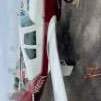bad landings
-
Members Online
- Fly Boomer
- BrentS
- Samir13k
- 47U
- TheAv8r
- M20F
- 802flyer
- TCC
- McMooney
- 201Mooniac
- AndreiC
- Greg Ellis
- Mooneydreamr
- MattD89
- Scottknoll
- Ibra
- AH-1 Cobra Pilot
- PeteMc
- wombat
- Rick Junkin
- ToddCC22
- M20S Driver
- SARNorm
- ohdub
- LOCOLJ
- blankc
- Mark Staggs
- Bolter
- spitzfyre
- outermarker
- 201Steve
- Derek449
- wolfbyte
- Z W
- clh
- eman1200
- BadMooneyRising
- tcal780
- PeterRus
- Aeroworx
- Neshi
- 00-Negative
- EricJ
- Jim F
- mmcdaniel33


Recommended Posts
Join the conversation
You can post now and register later. If you have an account, sign in now to post with your account.